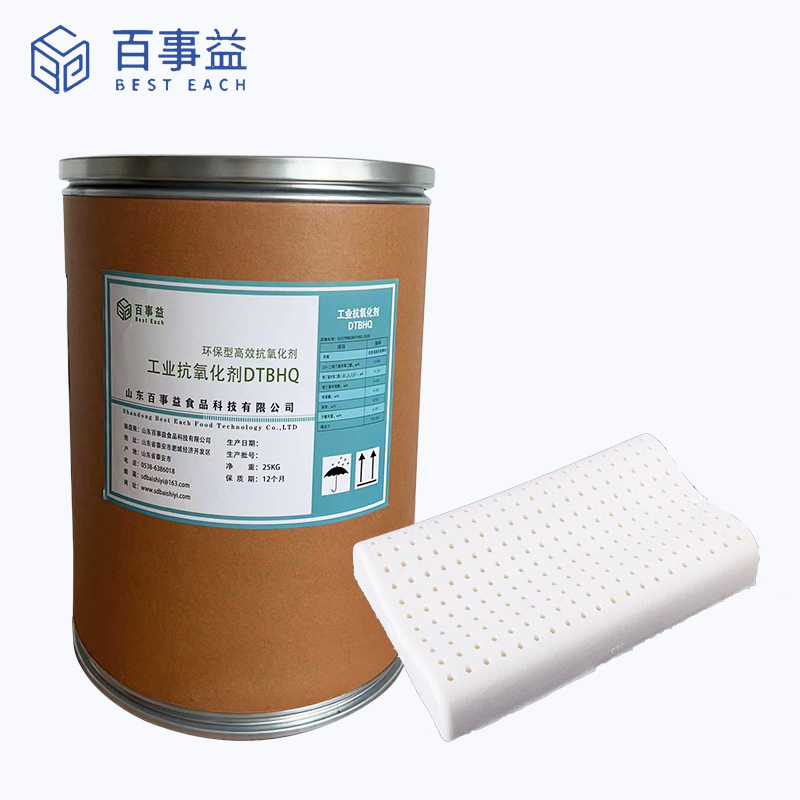Latex antioxidants
Tert butyl hydroquinone (TBHQ), also known as tert butyl hydroquinone, is a white crystalline powder with a melting point of 126.5-128.5 ℃ and a boiling point of 300 ℃. Its CAS number is 1948-33-0, and it is easily soluble in ethanol and ether. It is the most effective antioxidant for most oils, especially vegetable oils. T-butylhydroquinone, abbreviated as TBHQ, has a molecular formula of Cl0H1402 and a molecular weight of 166.22.
Tertiary butylhydroquinone, abbreviated as TBHQ, was approved as a food additive by the US FDA in 1972 and later by other countries around the world. It was approved for use in China in 1991. Enterprises producing tert butyl hydroquinone both domestically and internationally include Guangdong Food Industry Research Institute, Taibang, Eastman in the United States, Camlin in India, and others.
However, the active chemical properties of oils and fats are prone to deterioration due to oxidation and other factors. Oil antioxidants are a type of substance that can prevent or delay the deterioration of oils or fatty foods, extend their shelf life, and tert butyl hydroquinone (TBHQ) is a high-quality edible oil antioxidant.
At present, the production of tert butyl hydroquinone both domestically and internationally adopts the tert butylation method of hydroquinone, as shown in Figure 2. According to different classifications of alkylation reagents, it can be divided into tert butyl method, isobutylene method, and MTBE method. Due to the high toxicity of MTBE to human beings and the environment, this method is almost limited to theoretical research in the laboratory and cannot be promoted in industrial applications.
The tert butanol method is widely used and can be catalyzed by strong acids such as concentrated sulfuric acid and concentrated phosphoric acid. Both domestic and foreign patent literature have reported this process, such as using toluene or xylene as solvents, the selectivity and yield of this reaction are relatively ideal. In addition, strong acidic ion exchange resins such as D001 and Amberlyst 35, solid acids [5], zeolites [6], and ionic liquids [7] can also be used as catalysts for this reaction, but their catalytic activity is not ideal.








